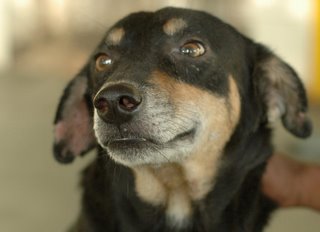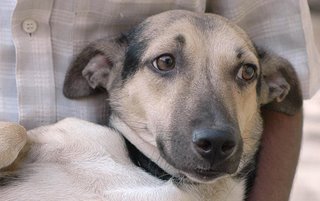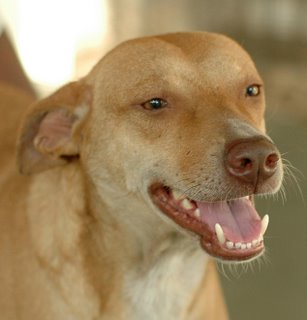 Last week, after visiting an Akanksha year ending project of their LTL programme at the Bombay International School located opposite the Babulnath temple, I strolled down to the Girgaum Chowpatty. Chowpatty brings back fond childhood memories. As it is located quite close to my home, we used to be take
Last week, after visiting an Akanksha year ending project of their LTL programme at the Bombay International School located opposite the Babulnath temple, I strolled down to the Girgaum Chowpatty. Chowpatty brings back fond childhood memories. As it is located quite close to my home, we used to be take n there on Sundays and during vacations and had a good time playing on the beach.
n there on Sundays and during vacations and had a good time playing on the beach.Chowpatty has changed over the years. The coniferous trees (opposite the Wilson college) aren’t there any more
 , the bhel, kulfi and paan walas have been shifted to one end and so has Anando- the famous masala milk place, a huge new swanky police chowky has come up, the maalishwalas are gone or are at least less conspicuous, a ringed enclosure has been built for feeding pigeons, there are blue and white striped sun-shade tents which can be rented out for a fee, a Nana Nan
, the bhel, kulfi and paan walas have been shifted to one end and so has Anando- the famous masala milk place, a huge new swanky police chowky has come up, the maalishwalas are gone or are at least less conspicuous, a ringed enclosure has been built for feeding pigeons, there are blue and white striped sun-shade tents which can be rented out for a fee, a Nana Nan i park has come up, the public toilet has been mordernised to a Sulabh Sauchalaya, the fishermen have been moved and in their place is a pretty and shady(lots of trees) Godrej park (huge fishing nets and big boats used to be kept in this area), a small play area for children has also
i park has come up, the public toilet has been mordernised to a Sulabh Sauchalaya, the fishermen have been moved and in their place is a pretty and shady(lots of trees) Godrej park (huge fishing nets and big boats used to be kept in this area), a small play area for children has also  come up next to the pedestrian over-bridge.(opposite Café Ideal)
come up next to the pedestrian over-bridge.(opposite Café Ideal) In fact, this bridge was a first of sorts for us, children. The fi
 rst escalator in Mumbai was installed here. Thus, a visit to Chowpatty meant less time on the beach and more time going up the escalator. As the escalator only worked one way (upwards), we used to keep going up using the escalator, running down the stairs on the other side and running round the over-bridge to go up again. This was repeated many times till the eld
rst escalator in Mumbai was installed here. Thus, a visit to Chowpatty meant less time on the beach and more time going up the escalator. As the escalator only worked one way (upwards), we used to keep going up using the escalator, running down the stairs on the other side and running round the over-bridge to go up again. This was repeated many times till the eld ers accompanying us lost their patience and took us back home. All of us felt very sad when some years later, they removed the escalator. Now, of course, children do not look at them with awe, as they are not rare anymore.
ers accompanying us lost their patience and took us back home. All of us felt very sad when some years later, they removed the escalator. Now, of course, children do not look at them with awe, as they are not rare anymore.Chowpatty still remains a weekend/ holiday activity for many Mumbaikars who come to the beach with their families especially children. The Chowpatty(beach) stretches from the Babulnath junction end right upto the Mafatlal bath. As I walked
 down from the Babulnath end, I saw some street kids tempting a stray puppy with grapes that he was merrily chomping on. Ahead at the Nana Nani Park, many senior citizens were chatting in groups or taking a stroll. Families were sprawled all over Chowpatty eating from picnic baskets or buying stuff from hawkers. Kids were running about on the sand and also playing at the children’s park under the watchful eye
down from the Babulnath end, I saw some street kids tempting a stray puppy with grapes that he was merrily chomping on. Ahead at the Nana Nani Park, many senior citizens were chatting in groups or taking a stroll. Families were sprawled all over Chowpatty eating from picnic baskets or buying stuff from hawkers. Kids were running about on the sand and also playing at the children’s park under the watchful eye of their parents. Lokmanya Tilak’s statue was standing tall but lonely as the gate of the entrance was locked. This was the place where he was cremated in 1920. The staff at all the food stalls, now relegated to one end was trying to woo customers. I left Chowpatty with mixed feelings, sad that it has lost its old charm but happy that its one of the few open spaces that Mumbaikars can bring along their families and enjoy.
of their parents. Lokmanya Tilak’s statue was standing tall but lonely as the gate of the entrance was locked. This was the place where he was cremated in 1920. The staff at all the food stalls, now relegated to one end was trying to woo customers. I left Chowpatty with mixed feelings, sad that it has lost its old charm but happy that its one of the few open spaces that Mumbaikars can bring along their families and enjoy. 






